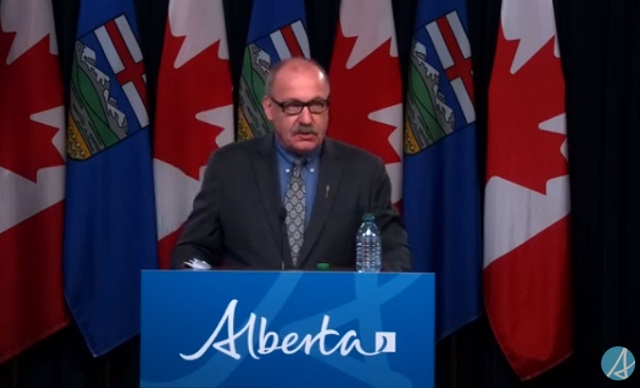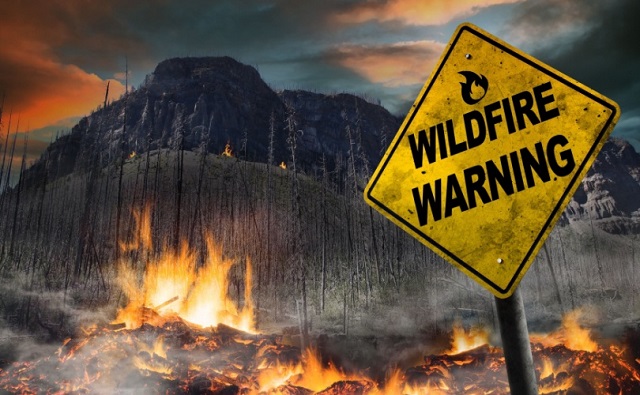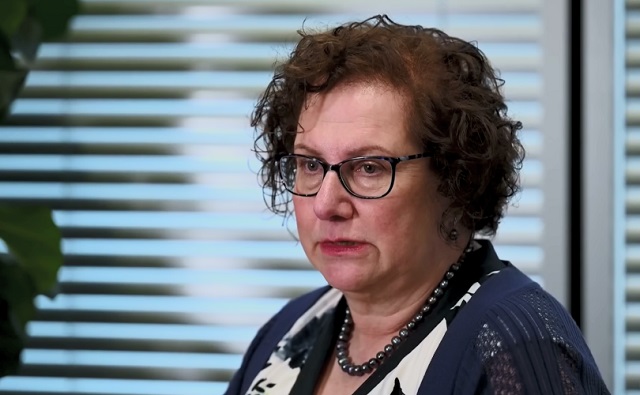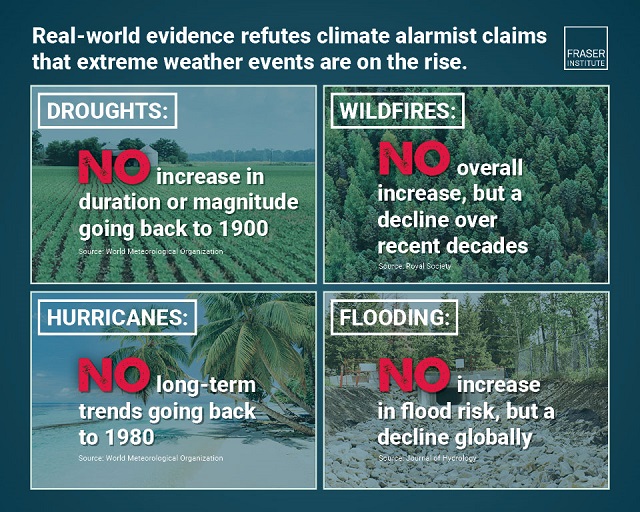Alberta
Petrified Buffalo Hearts, Indian Maiden Breasts, Stalagmites and 70 Million Year Old Worm Poop

I recently attended the Lieutenant Governor of Alberta Distinguished Artist Awards in Maskwacis, Alberta. I was fortunate to meet Dr. Russ Schnell. He is the Deputy Director of the National Oceanic and Atmospheric Administration, Global Monitoring Division, in the United States. He grew up in the Battle River region and shared a fascinating story about discovering 70 million year old “Rosselia Worm Fossils” in 1958 in the bed of Castor Creek at the confluence of the Battle River.
Dr. Schnell was kind enough to allow me to publish a story he had written some years ago. I shot the video of Dr. Schnell as he was telling the story of how the fossils were formed.
The following story is adapted from the book “Stories from Life: Beauty Everyday As It happens”, 2016, Jane Ross ed., ISBN:978-0-9695841-2-4, Friesens Books, Altona, Manitoba, 325 pages (for a copy contact: Jane Ross <[email protected]>).
____________________________________________________________________
Petrified Buffalo Hearts, Indian Maiden Breasts, Stalagmites and 70 Million Year Old Worm Poop
By Dr. Russ Schnell, B.Sc., Ph.D., Dr.Sci. (Hons).
It was a Saturday in August 1958. The summer day was hot up on the open prairie in east-central Alberta. The air was much cooler in the narrow valley, especially in the shadows. And most of the valley was in shadows from trees growing on the rims above the sandstone cliffs.
The rock was stored in my parent’s garage for 50 years until I brought it to Colorado, USA, where I now live.
About 1:00 PM, the noon wiener roast was over and we had waited the obligatory one hour after eating before going swimming. Everyone knew that you would get cramps and drown otherwise! No matter that the water was only 4 feet deep at the deepest, and then only behind the beaver dams. And that the water was to cold to do much other than dip a few times, dog paddle for 10 feet, then shout out that it was “cold enough to freeze the balls off a brass monkey”1 and splash to shore and stand around a smoky campfire of poplar branches. It was too early in the day for mosquitoes, and even if they had been out, the eye-burning smoke would have kept them away from our tender, lily white bodies. Only our faces, necks and arms were tanned from spending every possible hour outside playing, hiking, swimming and riding bikes over the 20 square mile area of grasslands and creek valleys we considered our “territory”.
On this day, walking in the water bare footed on the bedrock, we would occasionally feel smooth, rounded, tapered stones under the water. We recovered some of these “stones” which were very heavy for their size and that appeared to be composed of iron. At least they looked the colour of rusted iron!
No one seemed too concerned that the sparks from the fire could ignite the surrounding dry grass and possibly spread for miles. Hey, we were six 9-12 years old boys, friends since toddlers, invincible, girls yet to be discovered, having another boy’s day out along the creek, 2 miles from Castor town. We stood naked, dripping and shivering, occasionally stirring the fire back to life to keep warm while roasting (flaming) marshmallows on slender willow switches we had cut and peeled earlier on which to roast the wieners.
1. “Cold enough to freeze the balls off a brass monkey” is possibly an old naval saying. A monkey was a brass plate with holes in which iron cannon balls were stacked. When it got very cold the brass would contract more than the iron cannon balls and therefore the balls would pop out and roll off the brass monkey! Of course we did not know that then. We had heard older boys make the “brass monkey” statement when they were around girls who would giggle, so we thought it was “big” to talk like that.
Before roasting the wieners, we had played “stretch”, a game where two boys stand facing each other then throw a hunting knife to stick no more than 2 inches to the side of an opponent’s bare foot. If the knife stuck in the ground and was not more than the allowed 2 inches away, the recipient of the thrown knife moved his foot to touch the blade and then took a turn throwing his hunting knife to stick near the foot of the first thrower. The game ended when one person’s legs could no longer stretch further apart, and that person was declared the loser. There were always losers, never winners! All boys carried hunting knives in hip scabbards that summer. It was the thing to do.
A more imaginative member of the group said they felt like fossil Indian maiden breasts.
Now, to a pivotal juncture in this story. One reason we played in this particular part of the valley was that the creek had cut through to bedrock making it easy to cross on a solid rock footing. In most other stretches of the creek, the bottom was soft mud into which you would sink up to your knees or deeper. On this day, walking in the water bare footed on the bedrock, we would occasionally feel smooth, rounded, tapered stones under the water. We recovered some of these “stones” which were very heavy for their size and that appeared to be composed of iron. At least they looked the colour of rusted iron! They were conical in shape and every one had a well formed, round indentation on the apex. On the broad end there was generally (but not always) a finger size hole near the centre. The stones varied in size from a large potato to a small watermelon.
Since we found the heart shaped rocks at the base of a cliff we “knew” was an Indian buffalo jump, some of us thought they were petrified buffalo hearts. Supporting this supposition was the fact that one of the group had found a black, perfectly shaped, sharp, fluted arrowhead near the creek on a sandy path worn by deer coming down the valley wall to cross the creek. A more imaginative member of the group said they felt like fossil Indian maiden breasts, not that any of us could confirm how a maiden’s breast felt. One such “petrified buffalo heart”, presented upside down, is shown below.

This “petrified buffalo heart” is 8 inches tall and weighs 8 pounds. It appears to be made of iron but is not magnetic. These fossils wash out of 70 million year old seashore sediments and settle onto bedrock in a small creek in east-central Alberta. Photo by Ed Ries, Castor, Alberta, 2009.
I took one of the “buffalo hearts” home in my backpack wondering, occasionally, over the hour hike back to town, why I was carrying a rock that was so heavy. The rock was stored in my parent’s garage for 50 years until I brought it to Colorado, USA, where I now live.
But, I digress from the timeline. On the hike back to town our ragtag group diverted to look at the body of a dead cow lying in a pasture. We had discovered it a few days earlier and were interested in looking at it again. On the discovery visit, the cow must have been dead for only a few days. It was bloated like an overextended balloon, there were flies buzzing around the mouth, eyes and anus, but otherwise the cow was as if sleeping on its side like a horse. On this second visit, the carcass was less bloated, but to our great surprise had been completely hollowed out from the rear.
There were no intestines, no lungs, no heart, no stomach, no blood. The interior cavity was dry as dust, the hide was intact and the “roasts” were still on the thighs. We surmised that coyotes had devoured the soft insides by chewing from the butt end into the body cavity.
Within a few minutes, he printed out a copy of a scientific paper on ancient marine worms that made burrows in the seafloor and left imprints of their existence.
Before leaving the carcass we convinced, cajoled or otherwise enticed the youngest boy, who wanted to be part of the “big boys” group, to play “coyote” and crawl into the interior of the cow. He did so to our great amusement as we beat on the hide covered ribs stretched taut like a large reddish drum. When we returned to the carcass a week or so later, it was picked apart and remnants were being pecked at by magpies. What meat remained was a seething mass of white maggots.
Fast forward 50 years to 2008. By this time I knew that the conical rock was not a petrified buffalo heart or a maiden’s breast. I was a slow learner! I was now convinced though that the rock was a stalagmite formed by iron rich water that had dripped onto a cave floor over thousands of years. I looked on the Internet for similar stalagmites, but did not find any. Still, sure of my analysis, I wrote a letter to the director of the Royal Tyrrell Museum, Drumheller, Alberta enclosing photos, and described where these “stalagmites” were found and asking how old they were. I wrote the letter on heavy, expensive looking stationary with an official U.S. government letterhead festooned with gold embossed logos, and signed with a number of titles. I figured that might get his attention and a response.
A few weeks later I received an email thanking me for the letter and photos, and suggesting that the “stalagmite” was possibly a random iron accretion. Although not a paleontologist or geologist, I still believed that this rock was made by a deliberate, not random process. After further correspondence, Dr. David Eberth, Senior Research Scientist, Royal Tyrrell Museum, agreed to meet in Castor, Alberta in late June, 2009, and to come to the valley to look at what I still believed were stalagmites. I flew up from Colorado and David, myself, a sister and 5 friends from Castor proceeded out to the valley now owned by another friend from toddler days. He took us to an area of the creek where there were many of the “stalagmites” and we each collected a few specimens. David asked to see an exposed cliff so he could possibly find some of these iron rocks embedded in their natural habitat. Gary Dunkle, the land owner, duly took us to such an embankment and David found a few of the conical rocks imbedded in a loose, grey, alkaline soil in an exposed cliff face.
Then he told us that a world authority on such creatures was Professor Murray Gingras ’95 B.Sc., ’99 Ph.D., Department of Earth and Atmospheric Science, University of Alberta.
To my great surprise, the “stalagmites” were oriented conical point down in the cliff face. This is not how stalagmites form! David now lost some of his prior cool composure, as he convinced me that my earlier conjectures were incorrect, that we were looking at a 70 million year old seashore deposit, and these iron accretions had probably once been made by something related to the seashore.
In a humorous throwback to events 50 years earlier, one of the fossils that David had excavated became dislodged and rolled down the steep cliff splashing into the creek behind a beaver dam. We convinced Eric Neilson ’88, B.Sc. Agriculture and ’09, B.Ed. and now a local school teacher, to wade into the water and retrieve the fossil. The water was over four feet deep and Eric had to fully submerge to finally locate and recover the fossil that was embedded in silt. There was no fire to get warm and dry beside this time!
We returned to the insurance and real-estate offices of Dale Emmett, one of the members on this current expedition, where David used a computer to begin looking up something called “Rosselia” on the Internet. Within a few minutes, he printed out a copy of a scientific paper on ancient marine worms that made burrows in the seafloor and left imprints of their existence. Then he told us that a world authority on such creatures was Professor Murray Gingras ’95 B.Sc., ’99 Ph.D., Department of Earth and Atmospheric Science, University of Alberta. Small world!
We departed the office in triumph and sojourned to a nearby bar where Ed Ries, a local rancher and another member of the days’ expedition, bought us a round of beer to toast our success. While at the bar, Brenda Scott ’73, B.Ed. (sister, also on the excursion) brought out some perfectly preserved fossil snails that she had collected the day prior in a nearby fossil bed. David was quite interested, as these were fresh water snails that rarely fossilize into such perfect iron accretions. He wanted to know where they are found, but we declined to tell him as only a few members of our family know the location, and we do not want the location to be picked over. Someday we might show him, but that will be another story.
So how did worms living in the sediment in a 70 million old marine seashore make 8 pound “petrified buffalo hearts?” First, the worm is not like the garden variety earthworm one finds digging in Alberta garden soil. Instead it was thought be an elongated creature (let us say about one foot long) living vertically in seabed sediment with tentacles that could spread out over the seafloor to capture small organic particle or small creatures touching the tentacles. A stylized depiction of the worm and its burrow is shown below.

Rosselia worms lived in a burrow at the bottom of ancient marine seashores and captured food with tentacles spread around the entrance to the hole. They packed their poop into a bulbous structure within the hole. Eventually the organic material in the poop was replaced with dissolved iron producing the conical imprint shown above. (Drawing adapted from Masakazu Nara, Rosselia socialis: a dwelling structure of a probable terebellid polychaete, Lethaia, vol. 28, pp.171-178, 1995.)
The fossilized worm burrow lay at the bottom of the ocean for eons becoming covered by many feet of sediment.
The worm would slide down into its burrow to digest its meals, to poop and to get away from predators. To accommodate the poop, it would push out the sides of its vertical tube home which was probably easy to do as it was living is soft sediment. Eventually the worm would die or move on to a new home leaving the organic evidence of its existence within its seabed home.
Now for the rare events that produced the “petrified buffalo hearts” and exposed them for observation today. At some point 70 million years ago, the organic-rich waste in the worm hole was brought into sustained contact with a freshwater stream carrying dissolved iron compounds. This iron slowly fossilized the poop and food detritus. The fossilized worm burrow lay at the bottom of the ocean for eons becoming covered by many feet of sediment.
Eventually the land rose and the fossils were exposed by the Castor Creek that eroded through an uplifted area of the former beach. Some of the exposed fossils settled on bedrock where they are found today. Others are still slowly sinking in the muck at the bottom of the creek.

70 million year old fossilized poo from a Rosselia worm found in the Castor Creek near the confluence with the Battle River, September 18, 2019.
The Castor Rosselia fossils are rather rare in that they are well formed, well preserved iron accretions, and in the words of Dr. Gingras in an email to Dr. Eberth and copied to me, he states: “Rosselia are normally much smaller than the cannon-balls you show”.
And so we come full circle in a small valley in East-Central Alberta; cannon-balls to cannon-balls.

Dr, Russ Schnell
Dr. Russ Schnell, Deputy Director, NOAA, Global Monitoring Division, Boulder, CO
Russ was born and raised in Alberta, Canada and educated at the Universities of Alberta; Newfoundland; Hawaii; Wales; Wyoming and Colorado. He holds degrees in Biology, Chemistry, Atmospheric Resources and Atmospheric Science.
Dr. Schnell discovered biological ice nuclei in 1970 now used in ski hill snowmaking worldwide, and by their removal on plants, prevention of frost damage to -3C. These nuclei are important in precipitation formation with papers from around the globe now being published on the topic.
His research, as Director of the Arctic Gas and Aerosol project in the 1980s, established that Arctic Haze was air pollution from Eastern Europe. For 7 years he was director of the Mauna Loa Observatory, Hawaii, where the steady global increase in carbon dioxide that forms the backbone of the greenhouse gas atmospheric warming, was established.
He has conducted research on ozone destruction in the Arctic and Antarctic, ozone production from fossil fuel production and on the changing chemical composition of the atmosphere driving climate change.
He has published 125 scientific papers, nine of them in Nature, a premier scientific journal, and holds patents in plant science and biochemistry.
Russ has lived, traveled or worked in 92 countries, and on every continent including the North and South Poles.
In 2002, he received the NOAA Administrator’s Award for his work as director of the Mauna Loa Observatory.
In 2007, Dr. Schnell was recognized as one of the co-recipients of the Nobel Peace Prize as a member of the Intergovernmental Panel on Climate Change (IPCC).
In 2008, he was awarded the U.S. Department of Commerce Silver Medal the highest honorary recognition the Department bestows and in 2011 both the NOAA Distinguished Career and the NOAA OAR Outstanding Science Communicator Awards.
Dr. Schnell’s non-work interests include building wooden trains for children, “Little Free Libraries” for donation and real-estate investing.
He grew up near the Battle River in East Central Alberta. I met him while attending the Lieutenant Governor of Alberta Distinguished Artist Awards held in Maskwacis, AB on September 21, 2019.
Alberta
Political parties will be part of municipal elections in Edmonton and Calgary pilot projects

Strengthening Alberta’s local elections
Alberta’s government is introducing legislation to ensure Albertans can rely on transparent, free and fair elections, and municipally-elected officials have clearer accountability measures.
In a democratic society, Albertans expect their local elections to be free and fair, and their elected officials to be held to account by clear rules that govern their local councils. The Municipal Affairs Statutes Amendment Act proposes amendments to the Local Authorities Election Act (LAEA) and the Municipal Government Act (MGA) to add greater transparency to local election processes and ensure local councils and elected officials continue to remain accountable to the citizens who elected them.
“Our government is committed to strengthening Albertans’ trust in their local governments and the democratic process that elects local leaders. The changes we are making increase transparency for Alberta voters and provide surety their votes will be counted accurately. We know how important local democracy is to Albertans, and we will work with local authorities to protect and enhance the integrity of local elections.”
Local Authorities Election Act
Albertans expect free and fair elections and that’s why it’s important we strengthen the rules that govern local elections. To strengthen public trust in local elections, Alberta’s government will eliminate the use of electronic tabulators and other automated voting machines. All Albertans should be able to trust the methods and results of local elections; requiring all ballots to be counted by hand, clarifying rules and streamlining processes for scrutineers will provide voters greater assurance in the integrity of the results.
All eligible Albertans should be able to vote in local elections without impediment. Alberta’s government will limit the barriers for eligible voters to cast a ballot by expanding the use of special ballots. Currently, special ballots can only be requested for very specific reasons, including physical disability, absence from the municipality, or for municipal election workers. By expanding the use of special ballots, the government is encouraging more voter participation.
Amendments in the Municipal Affairs Statutes Amendment Act would increase transparency in local elections by enabling political parties at the local level. Political parties would be enabled in a pilot project for Edmonton and Calgary. The act will not require candidates to join a political party in order to run for a local or municipal office, but will create the opportunity to do so.
In addition, proposed changes to the Local Authorities Election Act would allow municipalities the option to require criminal record checks for local candidates, thus increasing transparency and trust in candidates who may go on to become elected officials.
Municipal Government Act
The role of an elected official is one with tremendous responsibility and expectations. Changes proposed to the Municipal Government Act (MGA) will strengthen the accountability of locally elected officials and councils. These include requiring mandatory orientation training for councillors, allowing elected officials to recuse themselves for real or perceived conflicts of interest without third-party review and requiring a councillor’s seat to become vacant upon disqualification.
If passed, the Municipal Affairs Statutes Amendment Act will also unlock new tools to build affordable and attainable housing across Alberta. Proposed amendments under the MGA would also create more options for municipalities to accelerate housing developments in their communities. Options include:
- Exempting non-profit, subsidized affordable housing from both municipal and education property taxes;
- Requiring municipalities to offer digital participation for public hearings about planning and development, and restricting municipalities from holding extra public hearings that are not already required by legislation; and
- Enabling municipalities to offer multi-year residential property tax exemptions.
Municipal Affairs will engage municipalities and other partners over the coming months to hear perspectives and gather feedback to help develop regulations.
Quick facts
- The LAEA establishes the framework for the conduct of elections in Alberta municipalities, school divisions, irrigation districts and Metis Settlements.
- The MGA establishes the rules governing the conduct of local elected officials once on council, as well as the overall administration and operation of municipal authorities in Alberta, including any policy those authorities may wish to implement.
Related information
Alberta
Alberta official reveals ‘almost all’ wildfires in province this year have been started by humans

From LifeSiteNews
Alberta Minister of Forestry and Parks Todd Loewen said his department estimates that most of the province’s wildfires this year are man-made and not caused by ‘climate change.’
Alberta officials have announced that almost all fires in 2024 are believed to have been caused by humans despite ongoing claims that “climate change” is to blame.
On April 24, Alberta Minister of Forestry and Parks Todd Loewen revealed that his department estimates that most of the province’s wildfires this year are man-made and not caused by “climate change” as claimed by mainstream media and politicians.
“We expect that almost all of the wildfires we’ve experienced so far this year are human caused, given the point we’re at in the season and the types of weather we’re seeing,” Loewen stated.
Already, Alberta has put out 172 wildfires this year, and 63 are actively burning. However, Loewen did not seem overly alarmed, instead warning Albertans to watch their local fire bans and restrictions to reduce the high number of man-made wildfires.
“I urge you to assess your property for wildfire danger and take any preventive action you can to address these risks,” he said.
“This includes breaking up fuel sources that could ignite a structure, removing trees in close proximity to your home, and properly maintaining your gutters and roofs to rid the materials that could easily ignite such as leaves and dry needles,” Loewen added.
Loewen’s announcement comes just weeks after Alberta Premier Danielle Smith promised that arsonists who ignite wildfires in Alberta will be held accountable for their crimes.
“As we approach the wildfire season, it is important to understand that 67% of wildfires in Alberta are started by people,” she explained.
“If you start a wildfire, you can be charged, fined, and held liable for all costs associated with fighting the wildfire,” Smith added.
Smith made the comments after last year revealing that most of the wildfires in her province (500 of the 650) were caused by humans and not “climate change,” as has been pushed by the legacy media and opposition politicians.
“All I know is in my province we have 650 fires and 500 of them were human caused,” she said, “so we have to make sure that when people know that when it’s dry out there and we get into forest fire season that they’re being a lot more careful because anytime you end up with an ignition that happens it can have devastating consequences.”
The Alberta government has also created an ad campaign highlighting the fact that most fires are caused by humans and not “climate change,” as many left-leaning politicians claim.
As reported by LifeSiteNews last year, Smith ordered arson investigators to look into why some of the wildfires that raged across the vast expanse of the province had “no known cause” shortly after they spread.
Indeed, despite claims that wildfires have drastically increased due to “climate change,” 2023 research revealed that wildfires have decreased globally while media coverage has spiked 400 percent.
Furthermore, many of the fires last spring and summer were discovered to be caused by arsonists and not “climate change.”
Royal Canadian Mounted Police (RCMP) have arrested arsonists who have been charged with lighting fires across the country, including in the Yukon, British Columbia, and Alberta.
In Quebec, satellite footage also showed the mysterious simultaneous eruption of several blazes across the province, sparking concerns that the fires were a coordinated effort by arsonists.
Despite the overwhelming evidence, Prime Minister Justin Trudeau and mainstream media continue to claim that the fires are unprecedentedly dangerous and caused by “climate change” in an attempt to pass further regulations on natural resources.
The reduction and eventual elimination of the use of so-called “fossil fuels” and a transition to unreliable “green” energy has also been pushed by the World Economic Forum (WEF) – the globalist group behind the socialist “Great Reset” agenda – an organization with which Trudeau and some in his cabinet are involved.
-

 conflict2 days ago
conflict2 days agoCol. Douglas Macgregor torches Trump over support for bill funding wars in Ukraine and Israel
-

 Health2 days ago
Health2 days agoTransgender activists are threatening the author of scathing UK report on child ‘sex changes’
-

 Frontier Centre for Public Policy2 days ago
Frontier Centre for Public Policy2 days agoThe end of Canada: The shift from democracy to totalitarian behavior in the ‘pandemic era’
-

 International2 days ago
International2 days agoBiden admin expands Title IX to include ‘gender identity,’ sparking conservative backlash
-

 Alberta2 days ago
Alberta2 days agoAlberta’s baby name superstar steals the show again
-

 Censorship Industrial Complex2 days ago
Censorship Industrial Complex2 days agoNow We Are Supposed to Cheer Government Surveillance?
-

 Business18 hours ago
Business18 hours agoDon’t be fooled by high-speed rail
-

 Alberta17 hours ago
Alberta17 hours agoActivity-Based Hospital Funding in Alberta: Insights from Quebec and Australia







